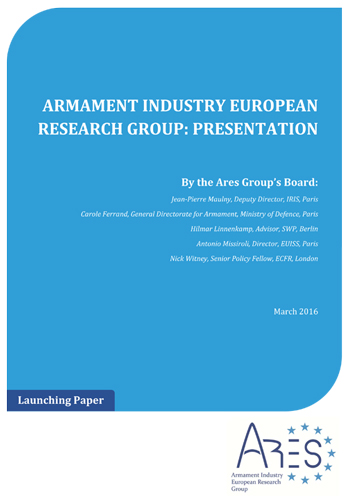Notes / ARES Group - The Armament Industry European Research Group
24 mars 2016
Armament Industry Research Group: Presentation

What is the link between the engines fitted onto Europe’s Ariane 6 space launcher, the fibre jackets used by mountaineers to scale the glaciers of the Italian Alps, Polish credit card chips, the internet, and drones that deliver books to people’s homes? They all rely on technologies that originated in the defence industry. With 1.4 million jobs measured by the European Commission in 2013, a host of highly‐skilled labour and €96 billion euros in annual turnover, Europe’s defence industry is one of the prime reservoirs of European prosperity and innovation today. It is also one of the main conditions of the EU’s technological edge, economic development, freedom to act in the long term and credibility on the global stage.
And yet, the European defence market is not really a market as such. States are the only customers of the armament industry and largely define its market landscape. They pass the regulations that apply to defence companies, protect them against possible foreign predators, and influence competitiveness. Unlike in civilian industries, states fund the research and development needed by the defence industry to develop assets. Indeed the reason the defence industry exists in the first place is the wish by European states to guarantee their own security, and have an ability to act abroad to manage crises where necessary. As early as 1957, the EU allowed European states to protect the “essential security interests” of their defence industries, insofar as they tied into their defence and security policies, and ultimately into their national sovereignties…

